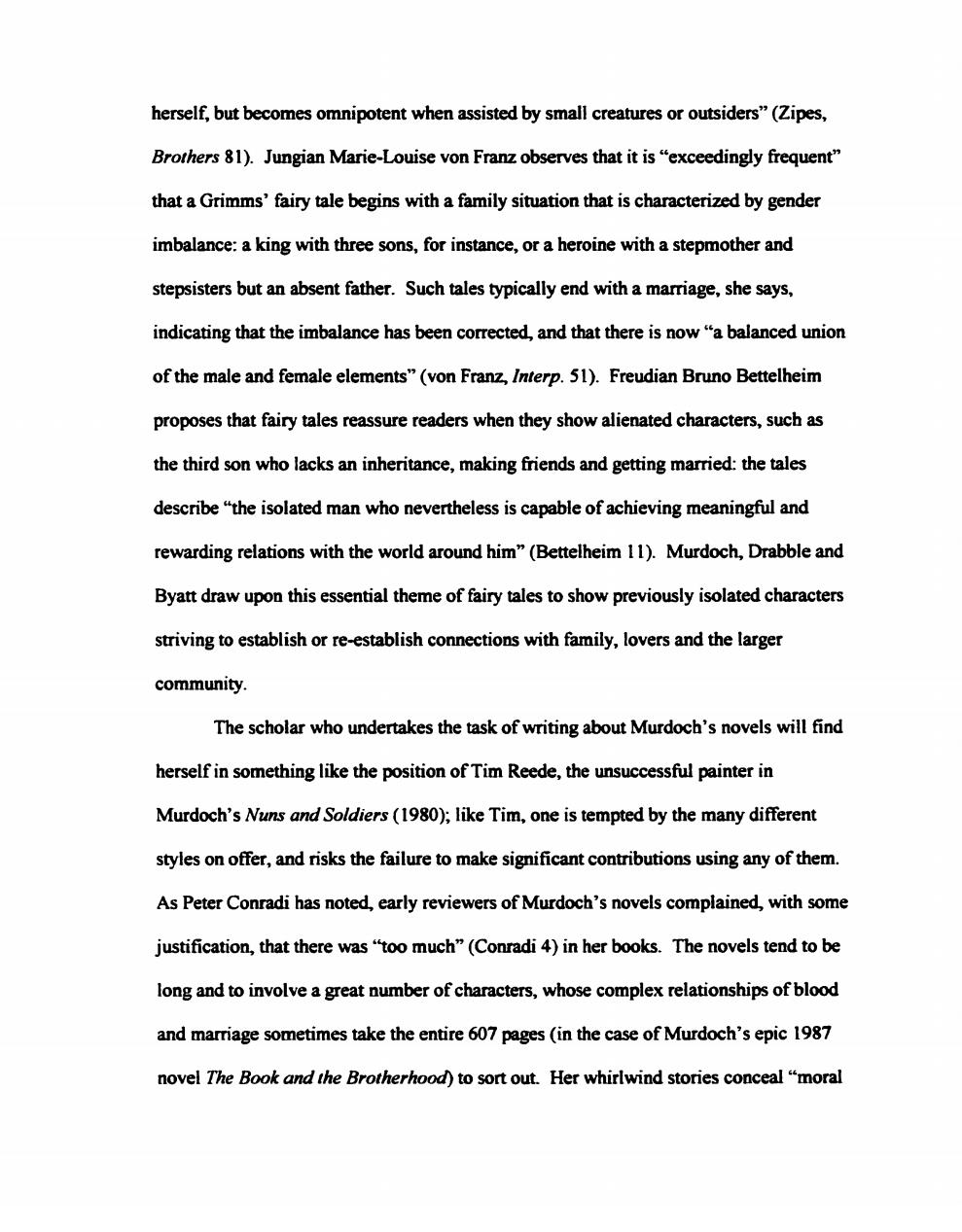正在加载图片...

herself,but becomes omnipotent when assisted by small creatures or outsiders"(Zipes, Brothers 81).Jungian Marie-Louise von Franz observes that it is"exceedingly frequent" that a Grimms'fairy tale begins with a family situation that is characterized by gender imbalance:a king with three sons,for instance,or a heroine with a stepmother and stepsisters but an absent father.Such tales typically end with a marriage,she says, indicating that the imbalance has been corrected,and that there is now"a balanced union of the male and female elements"(von Franz,Interp.51).Freudian Bruno Bettelheim proposes that fairy tales reassure readers when they show alienated characters,such as the third son who lacks an inheritance,making friends and getting married:the tales describe "the isolated man who nevertheless is capable of achieving meaningful and rewarding relations with the world around him"(Bettelheim 11).Murdoch,Drabble and Byatt draw upon this essential theme of fairy tales to show previously isolated characters striving to establish or re-establish connections with family,lovers and the larger community. The scholar who undertakes the task of writing about Murdoch's novels will find herself in something like the position of Tim Reede,the unsuccessful painter in Murdoch's Nuns and Soldiers(1980);like Tim,one is tempted by the many different styles on offer,and risks the failure to make significant contributions using any of them. As Peter Conradi has noted,early reviewers of Murdoch's novels complained,with some justification,that there was"too much"(Conradi 4)in her books.The novels tend to be long and to involve a great number of characters,whose complex relationships of blood and marriage sometimes take the entire 607 pages (in the case of Murdoch's epic 1987 novel The Book and the Brotherhood)to sort out.Her whirlwind stories conceal"moral